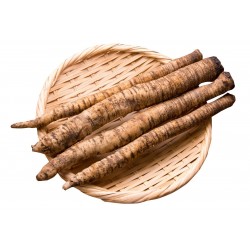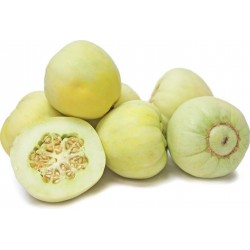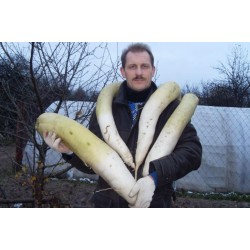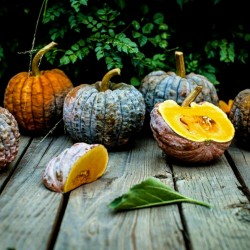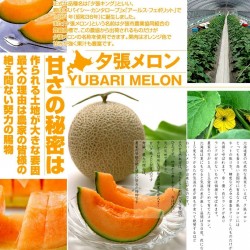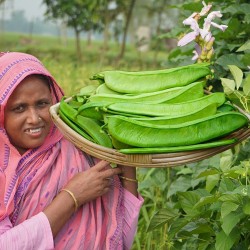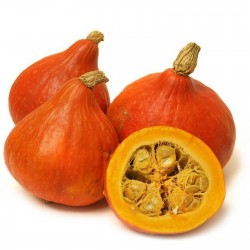Seeds Gallery EU,
5/
5
<meta http-equiv="Content-Type" content="text/html; charset=UTF-8" />
<h2><strong>Yubari King Σπόροι Πεπόνι Το πιο ακριβό φρούτο στον κόσμο</strong></h2>
<h2><span style="color: #ff0000;"><strong>Τιμή για το πακέτο των 5, 10, 50 σπόροι.</strong></span></h2>
<p>TOKYO A remarkably sweet canteloupe auctioned in Japan fetched a record $12,000, making it one of the most expensive canteloupes ever sold in the country.</p>
<p>In a society where melons are a luxury item commonly given as gifts the jaw-dropping auction last month shocked everyone! At that auction, a pair of "Yubari" cantaloupe melons sold for a record $23,500. Wikipedia Yubari</p>
<p>A pair of cantaloupes from the bankrupt city of Yubari, Hokkaido, fetched a whopping 2 million yen at the first auction of the season at the Sapporo central wholesale market, the Japan Agricultural Cooperative's Yubari unit said. The price paid by Marui Imai Inc., a Sapporo-based department store, for the upmarket produce surpassed the previous record of 800,000 yen for two cantaloupes, JA Yubari said. "Perhaps the city's designation as a financially rehabilitating entity ironically helped generate an advertising effect," said a spokesperson for the former coal town, which went bankrupt last year. "This will encourage the city a lot." </p>
<p>The two melons were put on display at Marui Imai's flagship outlet priced at 1 million yen apiece. Yoshikazu Hoshino, 59, a purchasing officer at the department store, said the cantaloupes were more for publicity than profit. "We were bullish in the bidding because we're celebrating our 135th anniversary this year. We wanted as many customers as possible to see them," he said. One of the million-yen fruits has already been sold, the store said. Other shoppers were stunned by the price. </p>
<p>"It's not a price I can afford," said Ryoko Hino, a 79-year-old shopper.</p>
<p>So the Yubari King costs generally from 100 to 1000 € / piece.</p>
<p>How to Cultivate Yubari King Melon</p>
<p>Side Selection</p>
<p>Try to plant in a location that enjoys full sun and remember to water often. Keep in mind when planting that Yubari King is thought of as hardy, so this plant will survive close to or on freezing temperatures. </p>
<p>Soil</p>
<p>The soil the melons are grown in is volcanic ash. It's not what's in the volcanic soil, but how the soil behaves. It lets growers there easily control the temperature of the soil, and the ash lets water quickly drain through, allowing for the top to remain dry, which promotes the size of the melons. Yubari King needs a potting mix soil with a ph of 6.1 to 7.5 (weakly acidic soil to weakly alkaline soil). You just buy a bag of compost and add it to your soil to feed your plants. It is not only better for them, it is also cheaper. </p>
<p>Seeding:</p>
<p>Try to aim for a seed spacing of at least 1.89 feet (58.0 cm) and sow at a depth of around 0.5 inches (1.27 cm). Soil temperature should be kept higher than 21°C / 70°F to ensure good germination. By our calculations, you should look at sowing Yubari King about 14 days before your last frost date.</p>
<p>Ensure that temperatures are mild and all chance of frost has passed before planting out, as Yubari King is a hardy plant.</p>
<p>Planting</p>
<p>Melon are planted in February. The first ones are ready for harvest 105 days after planting. The growing season ends in early September. Cut away any diseased or pest damaged leaves first. This will enable the plant to put all of its energy into making a great Melon instead of making more leaves. Melons are an annual, not a perennial. They can grow more than 1 harvest but the first is always the best but if you have an heirloom and need the extra seed then let more fruit set after your first harvest. DO NOT let fruit set until AFTER your first harvest so all of the plants energy (sugars) go into the Melon(s) on the vine.</p>
<p>At long last, to see flowers appearing on the vines, which mean melons are on their way! It seems like it takes forever but really it only has been a little over a month or so.</p>
<p>Watering and Fertilizer You have covered this in the past but things change when the melons start to grow. You should water them every other day if your soil is well drained. Keep an eye on the top of the soil and water when the top is dry to a depth of about ½ inch. There should never be a fear of overwatering if your soil drains well and containers have holes for excess water to leave from. Remember, very dry soil sheds water like a Ducks back. It will take time for the water to soak into the soil and you will have a lot of run-off until it rehydrates. Never water with cold water since it will shock the plant a little and may slow growth or development of fruit. You may need to water every other day with 1 gal of water for every 4 cubic feet of growing medium but you might decide that you want to water less. Your local weather will also play a role. </p>
<p>If you started with a soil mix of compost, you should not need to fertilize your plants. You can do however, like to add ½ tsp of Super Thrive to every 2 gallons of water. This will help them resist pests and develop much stronger. After the fruit gets to the size of a grapefruit You can use only water until harvest.</p>
<p>Pollinate</p>
<p>Melons will not appear out of nowhere. There needs to be a male and female flower for the Melon to form. The fruit will grow from the female flower. Male flowers are the first to appear on the plant. If you have other Melons growing in your yard then you might consider covering the Ichiba Kouji with a mosquito net to keep bees from pollinating your other melons, especially if they are heirloom. When the female flowers appear, take a male flower and place it inside the female flower or use a small dust brush and swab the inside of the male flower and then swab the female flower to pollinate. You can also let bees do this for you if you wish. Only 2 Melons (at most) should be grown on the vine at a time. Each plant should yield 4 or more Melons if you let them but they will be smaller and lower quality. “I must sacrifice the others to make the best one possible.” - Japanese Melon Grower The Japanese master growers hand pollinate three flowers and let them get to about the size of a baseball, then select the best one and let only that one grow. The others can be chopped up and added to the compost pile.</p>
<p>When Melons burst! </p>
<p>The inside of the melon is growing so fast that the outside can’t keep up so a crack forms. At this point, the plants sugars flow out to cover the crack and heal the melon. This is supposed to happen, in fact, if it doesn’t your doing something wrong. This is what forms the reticulation or netting. The finer the reticulation is, the juicier the inside is. </p>
<p>“If the reticulation is great, the inside is great too.” – Japanese Melon Judge</p>
<p>If you don’t make good netting, then you don’t make a good melon. This is where art makes an entrance. It is something that you’re going to have to experiment with to get the melon just the way you like them. If you just set it on the ground, then the melon will not form a perfect circle and the netting may be affected, not to mention bugs getting into them. If you put them on a trellis then the juices may not be evenly distributed or may become misshapen or even caught inside the trellis if you’re not careful. This is why you can use them to hang the melon so that it would not be disturbed.</p>
<p>Harvesting</p>
<p>After the cracking is over with and the melon is healed it is time for the next technique. Several times until you’re ready to harvest, you need to put on some cotton work gloves and rub firmly all around the melon. You should do this twice a week. For example: Monday and Thursday. The reason for doing this is to make the Melon sweeter. </p>
<p>“This is called Tama Fuki. It stimulates the melon and adds sweetness.” – Japanese Melon Grower</p>
<p>Melons are hard to tell when they are ripe. They stay green and on the vine. So how do you know when they are ready? </p>
<p> 1. The stem is “green and strong” (dry)</p>
<p> 2. The bottom of the Melon is “flexible” (slightly soft)</p>
<p> 3. Should feel heavier than it looks.</p>
<p> 4. You should smell the Melon aroma when in close proximity.</p>
<p>Pest and Diseases:</p>
<p>Quality</p>
<p>To most Americans, your melon will taste just like a regular melon. A really good melon but unless they know what they have in their hands then they will most likely overlook the quality. Only when they bite into a regular store bought melon will they realize what they once held. The quality of your melon can be seen without cutting it open. If you look at a store bought melon, you will see that the “netting” or reticulation is very fine or small. A great melon will have more pronounced or thicker lines in the reticulation. This quality level depends mostly on the watering schedule that is set. Personally we found that watering every other day to work best in my area but that may change depending on your climate. Remember that melons come from a desert environment. We wish you luck in your melon growing adventures!</p>
V 2 (5 S)









